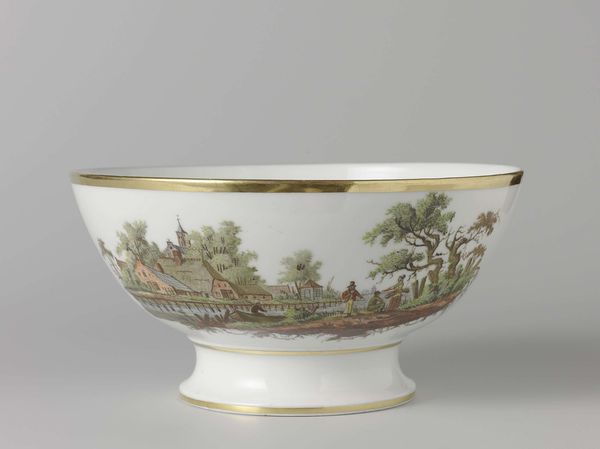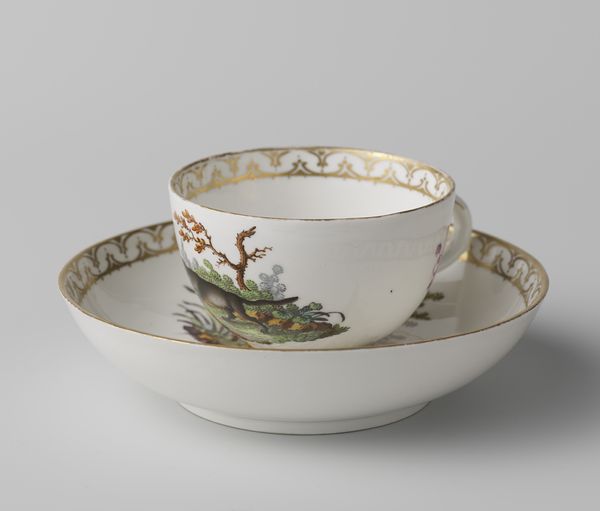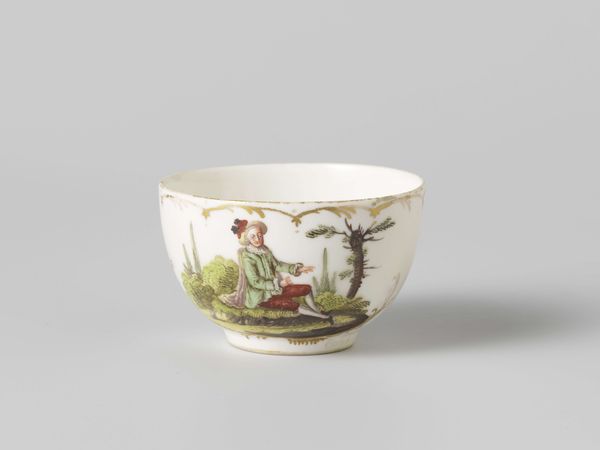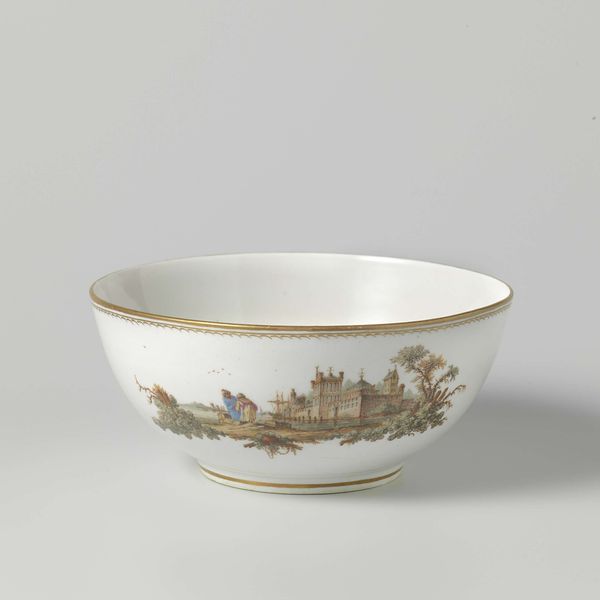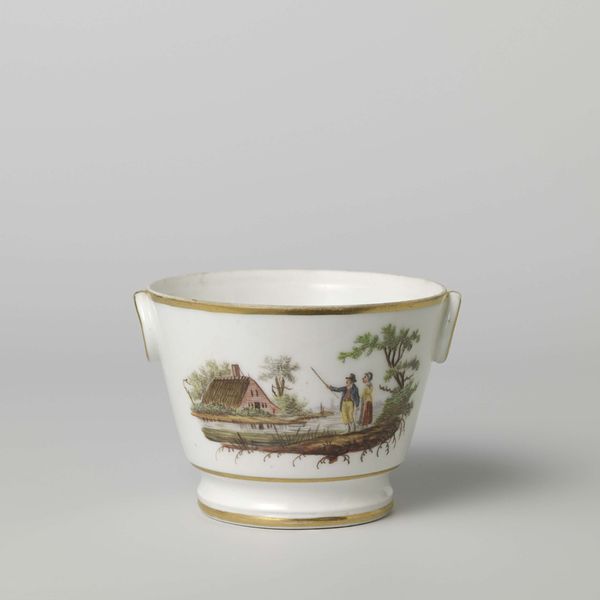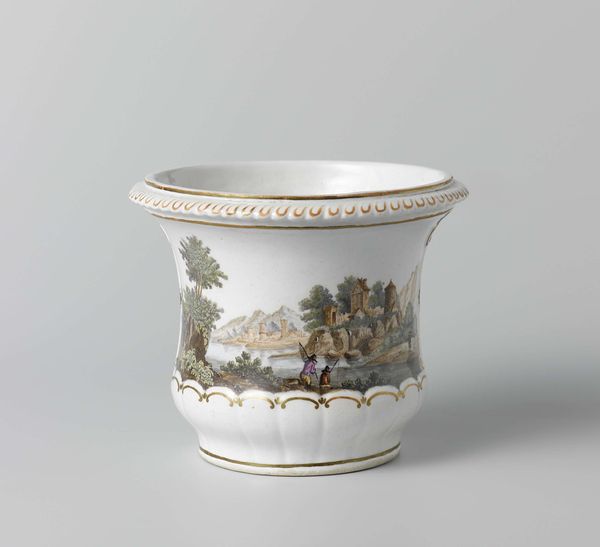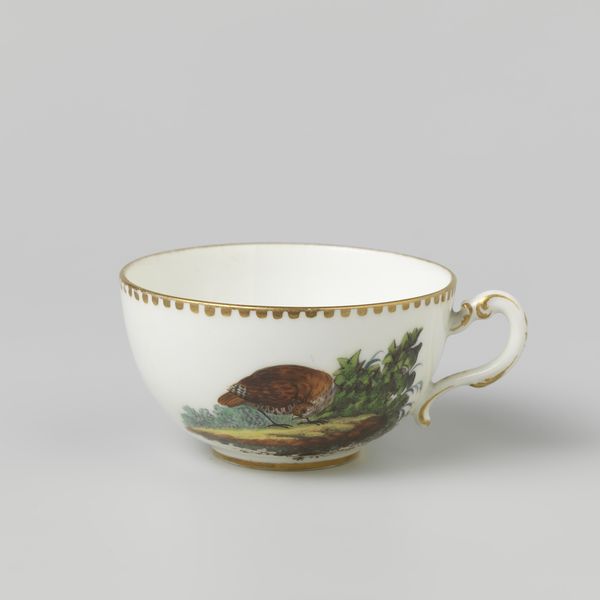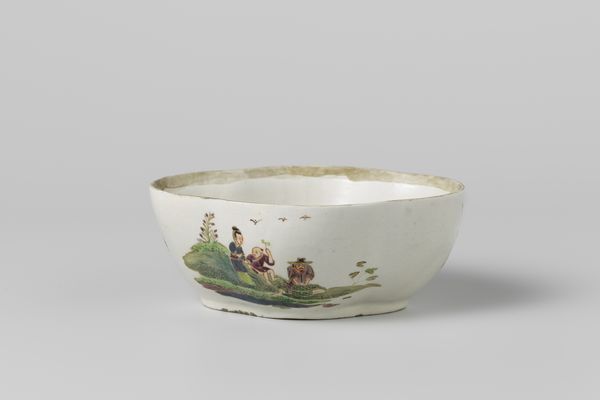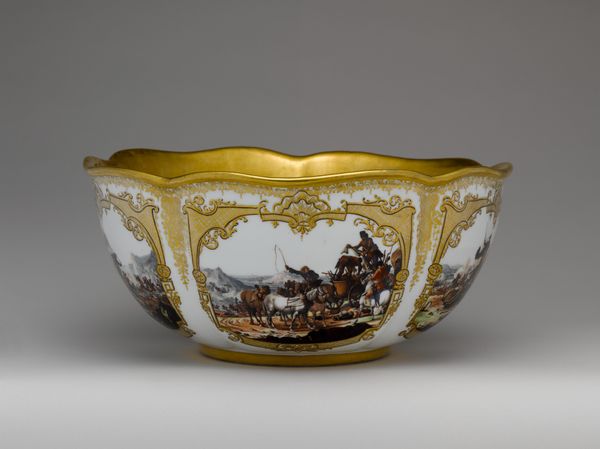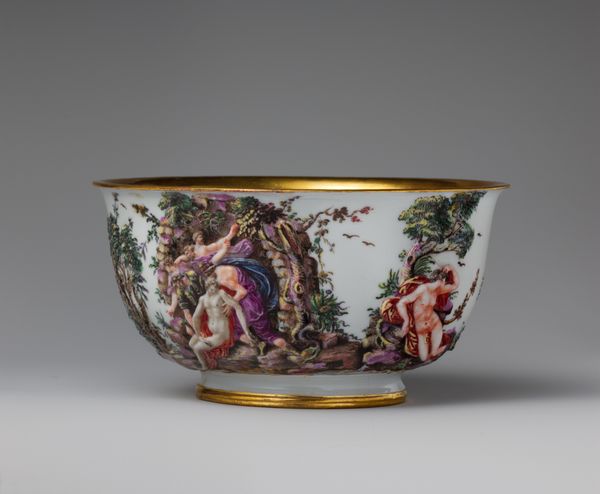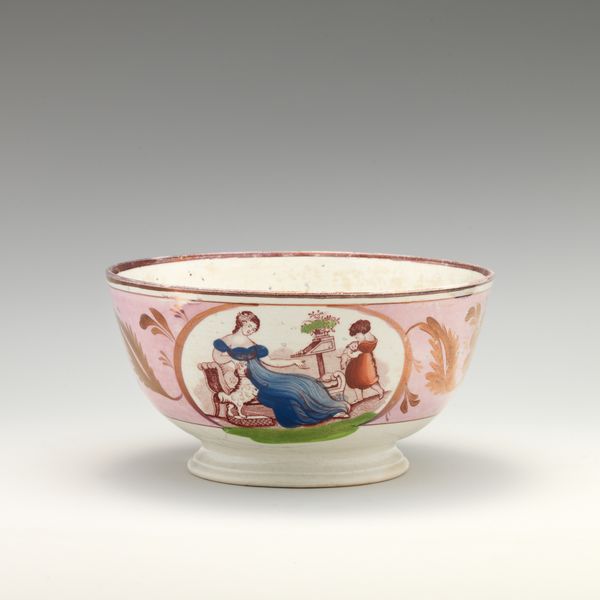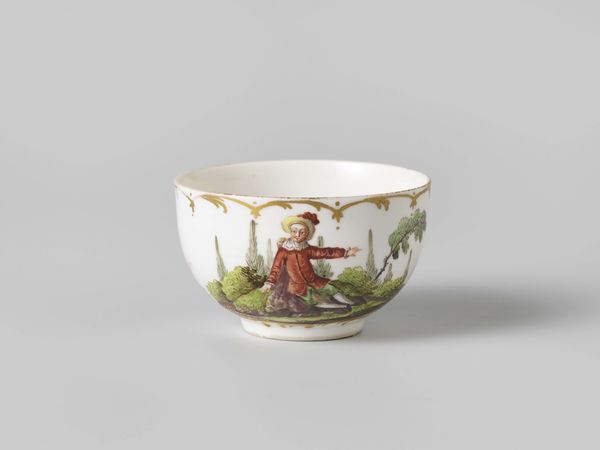
Dimensions: height 9.5 cm, diameter 20.8 cm
Copyright: Rijks Museum: Open Domain
Editor: So, this is a porcelain bowl, "Spoelkom, beschilderd met pluimvee in een landschap", painted by the Loosdrecht manufactory around 1782-1784. It's currently held at the Rijksmuseum. The scene painted is quite lively, with a fox going after the chickens. What social commentaries do you see in this work? Curator: It’s a compelling scene, isn’t it? The tension is almost palpable, which speaks to broader power dynamics. Consider the context of the late 18th century. These seemingly innocent genre scenes, especially within decorative arts, often masked commentaries on social hierarchies and anxieties. How do you interpret the fox in relation to, say, the rise of a merchant class? Editor: I hadn't thought of it that way! Perhaps the fox represents the perceived threat to established order or wealth? Curator: Exactly! The poultry, often associated with domesticity and rural life, could represent the traditional aristocracy or the burgeoning middle class. The fox's intrusion disrupts this established order, potentially mirroring societal shifts. Rococo, the artistic movement in question, often toys with these tensions beneath a veneer of decorative beauty. Do you think gender roles might be playing a part too? Editor: Maybe the chickens represent vulnerability and domesticity, traditionally associated with femininity. The fox's aggression, then, could be read through a feminist lens, highlighting power imbalances? Curator: Precisely! It is critical to remember the history and context of the work. Even a simple image has broader intersectional narratives focused on identity, gender, and politics. Editor: Wow, I hadn't considered how much could be read into a decorative bowl! I see now that even these historical landscapes can reflect much larger societal ideas. Curator: Indeed. Objects like these offer a window into the complexities of the past, reminding us that art always exists within and responds to specific historical and cultural contexts.
Comments
No comments
Be the first to comment and join the conversation on the ultimate creative platform.
